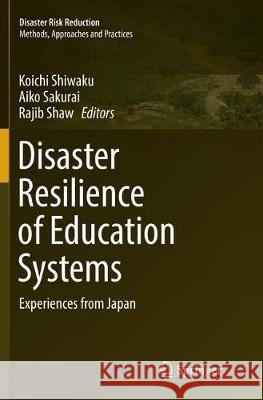Disaster Resilience of Education Systems: Experiences from Japan » książka
topmenu
Disaster Resilience of Education Systems: Experiences from Japan
ISBN-13: 9784431567448 / Angielski / Miękka / 2018 / 241 str.
Disaster Resilience of Education Systems: Experiences from Japan
ISBN-13: 9784431567448 / Angielski / Miękka / 2018 / 241 str.
cena 363,12 zł
(netto: 345,83 VAT: 5%)
Najniższa cena z 30 dni: 346,96 zł
(netto: 345,83 VAT: 5%)
Najniższa cena z 30 dni: 346,96 zł
Termin realizacji zamówienia:
ok. 22 dni roboczych
Bez gwarancji dostawy przed świętami
ok. 22 dni roboczych
Bez gwarancji dostawy przed świętami
Darmowa dostawa!
Kategorie BISAC:
Wydawca:
Springer
Seria wydawnicza:
Język:
Angielski
ISBN-13:
9784431567448
Rok wydania:
2018
Wydanie:
Softcover Repri
Ilość stron:
241
Oprawa:
Miękka
Wolumenów:
01











